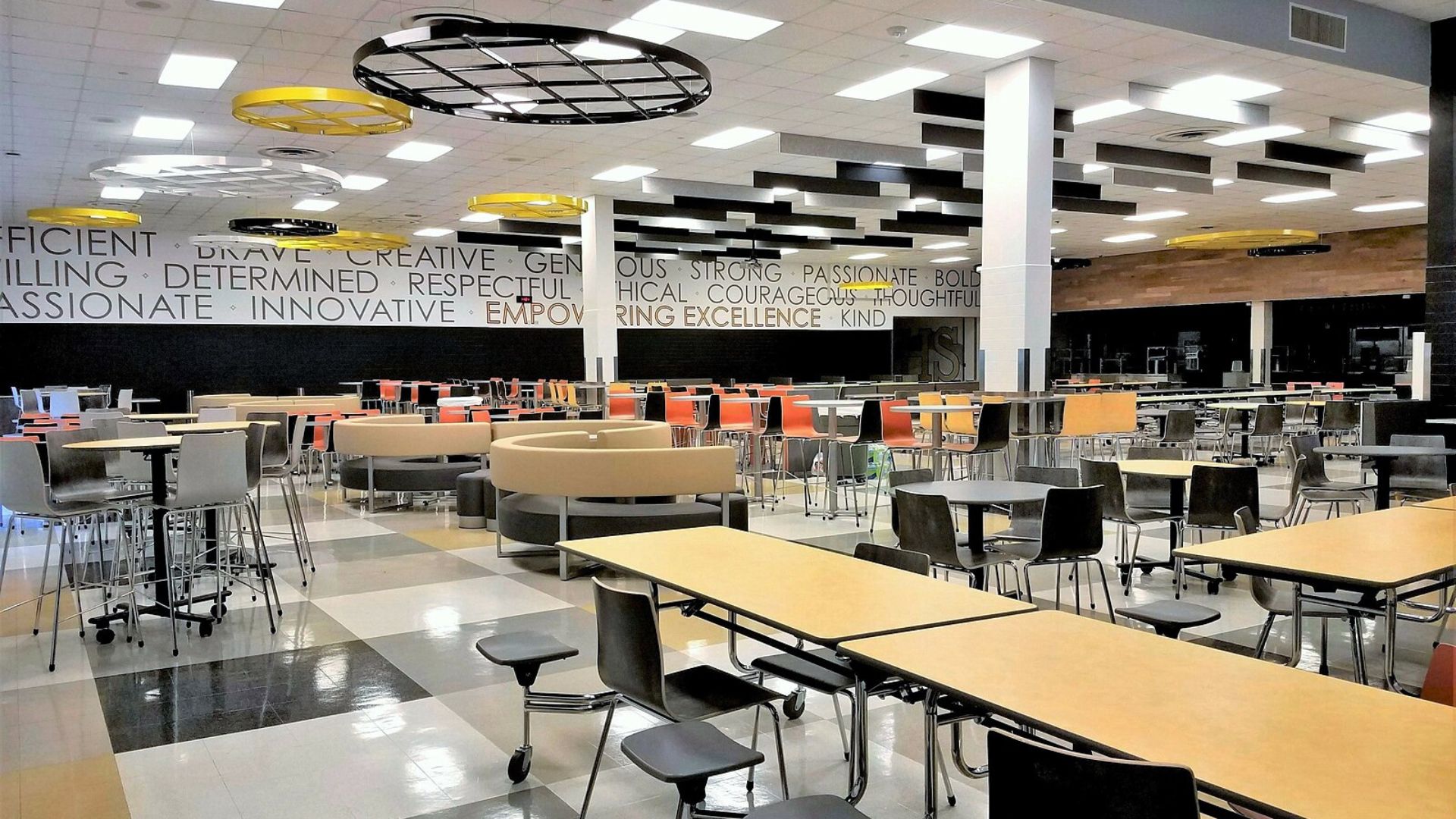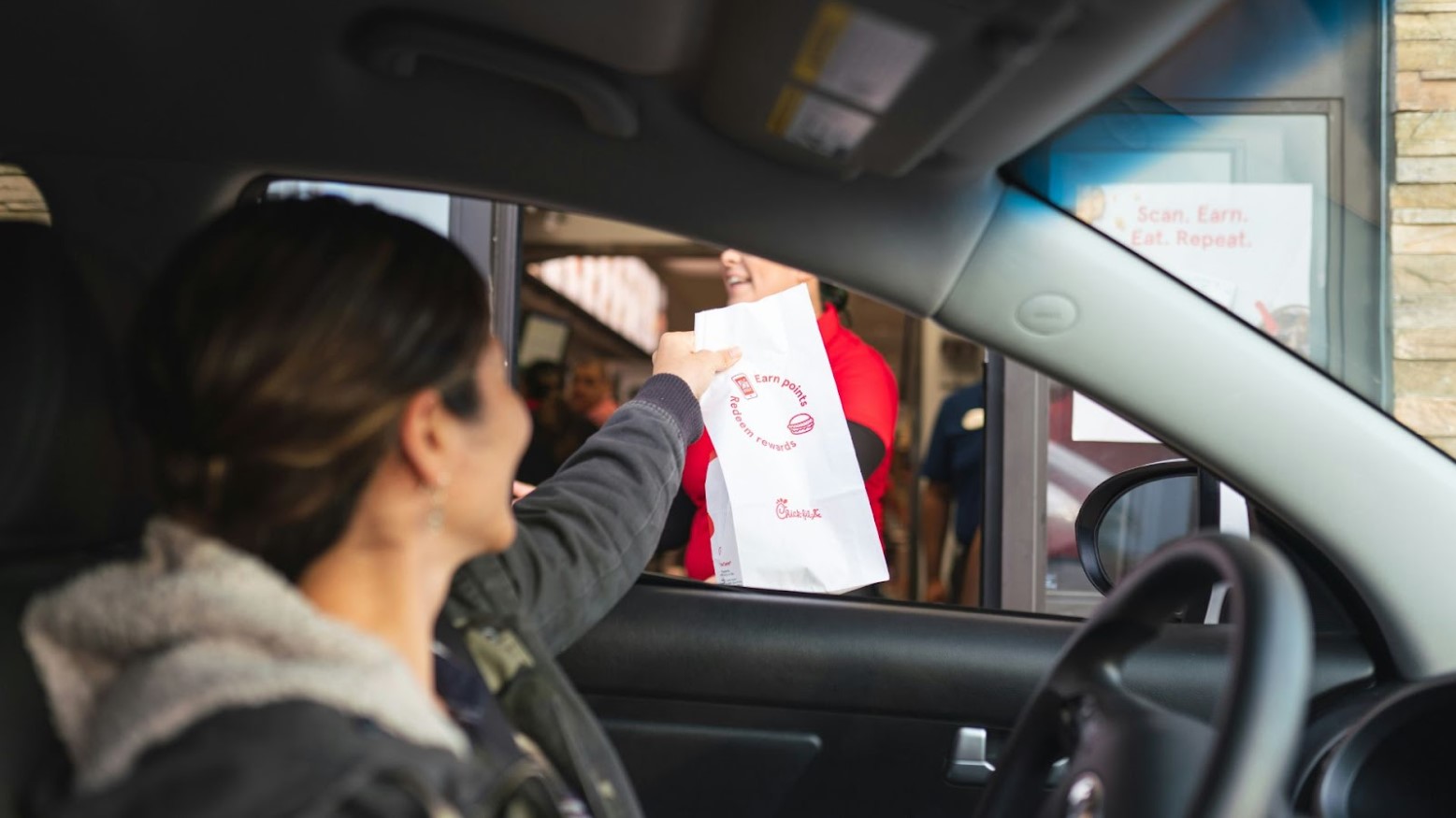California Schools Are in Crisis as Cafeteria Workers Leave After New $20 Minimum Wage Increase
In California, a groundbreaking move to set the minimum wage for fast food workers at $20 an hour has introduced a unique challenge. Public schools now find themselves in a tug-of-war with giant fast-food corporations for the same pool of employees.
Fast food giants like McDonald’s, Wendy’s, and Pizza Hut are now direct competitors for the staff who keep school cafeterias running.
California's New Wage Law Doesn't Apply to School Food Service Workers
California raised the minimum wage for fast food workers in the state, guaranteeing that employees working at chains with at least 60 locations nationwide would receive $20 an hour.

Source: U.S. Department of Agriculture/Flickr
Unfortunately, this law does not apply to school food service workers, who are historically some of the lowest-paid workers in public education.
The Challenges At School Cafeterias
Cafeteria shortages are not uncommon in the U.S. A recent report for the School Nutrition Association found that a majority of surveyed districts were facing “significant challenges” when it came to staffing cafeterias.

Source: Debs/Flickr
“There’s a shortage every day because it doesn’t pay well,” says Roxanne Beissel, who earns $15 an hour cooking in Hastings, Minnesota, schools. The combination of high stress and low wages, cook Roxanne Beissel explains, “is definitely not appealing to a lot of people.”
Low Wages Deter People from These Jobs
A report from the California School Nutrition Association and the Chef Ann Foundation reveals that school districts have chronic problems with recruiting and retaining staff because of low wages.

Source: Karolina Grabowska/Pexels
The report says that “persistent staffing issues” lead to more use of pre-packaged food and longer lines for lunch, with students sometimes resorting to skipping meals.
The Biggest Challenges
Mary Dotsey, a food service specialist in Indian River County public schools in Florida, told Jacobin, “When we’re short-staffed, that means not all the food is getting cooked. So we’re running out by third lunch, and we’re scrambling.”

Source: Defense Visual Information Distribution Service/Flickr
States offering free meals fail to realize that the spike in meal participation has affected staff shortages.
California Free School Meals
The state’s commitment to provide free meals to every student has led to a dramatic increase in the demand for cafeteria staff.

Source: Wikimedia Commons
With an expected delivery of 70 million more meals this year compared to five years ago, the need for a dedicated cafeteria workforce has never been more critical in California schools.
The Staffing Crunch in School Cafeterias
Schools have always grappled with high turnover and staffing troubles in their cafeterias. Now, with the wage increase, these issues are predicted to intensify.

Source: Annie Spratt/Unsplash
“They are all very worried about it. Most are saying they anticipate it will be harder and harder to hire employees,” shared Carrie Bogdanovich, president of the California School Nutrition Association.
Renaming the Job
Some districts are trying to entice people to become service workers by limiting the number of entry-level positions and seeking higher-skilled workers.

Source: Freepik
Complex roles like “culinary lead” and “central kitchen supervisor” require more skills and hours. This was done to make jobs more attractive to applicants.
Being a Full-Time Cafeteria Worker Isn't Enough
Many cafeteria service workers classify themselves as part-time, even “full-time” cooks. While they work an average of six and a half hours a day for nine to ten months a year, many of these workers need another job to survive.

Source: Defense Visual Information Distribution Service/Flickr
Others require public assistance, especially during the summer months when school is out and jobs are scarce.
The Wage Gap Widens
The difference in pay between school cafeteria workers and fast food employees is becoming starkly evident.

Source: Obi - @pixel8propix/Unsplash
For example, in Fresno, a school district cafeteria worker might earn as little as $15 an hour, a figure that significantly lags behind the new fast food minimum wage, The New York Post reports.
Schools Making Moves Ahead of Time
In response to potential staffing crises, some school districts have proactively raised wages for their cafeteria staff.

Source: Wikimedia Commons
Notably, the Sacramento Unified School District has already instituted a 10% pay rise last year, with plans for an additional 6% soon, aiming to match fast food industry wages.
Sacramento’s Strategy to Stay Competitive
The Sacramento Unified School District is adopting a broader approach to tackle this wage war.

Source: Wikimedia Commons
“We are looking not only at competing with districts and comparing with districts, we’re also looking at fast food places,” Cancy McArn, the district’s chief human resources officer, said to AP, of the district’s efforts to keep pace with the evolving job market.
Doubling Down on Staff
Fortune reports that the San Luis Coastal Unified School District responded to a 52% surge in school meal participation by doubling its food service staff.

Source: Wikimedia Commons
Now preparing 8,500 meals daily across various schools, the district is prioritizing roles that are more appealing to job seekers.
A Closer Look at Lynwood’s Dilemma
In the Lynwood Unified School District, starting wages for food service workers hover around $17.70 per hour, peaking at $21.51.

Source: Wikimedia Commons
However, given that these employees only work 3 hours per day, they miss out on health benefits.
The Benefits Don't Outweigh the Paycheck
While health care coverage and other benefits are available at some schools, the overwhelmingly female and older workforce serving school children across the U.S. don’t receive any benefits.

Source: JESHOOTS.COM/Unsplash
Unfortunately, if schools do offer benefits, they often do not help limit the expenses of care.
The Consequences Facing California Schools
With all of these challenges facing service workers at cafeterias, $20 an hour to do less work gives the hope of something better.

Source: Jp Valery/Unsplash
But without the service workers, there is no one there to serve the children, causing California’s plan to feed every student to backfire.
Boosting Support for School Kitchens and Staff
California is stepping up with significant investments to enhance school meal programs, including $720 million for kitchen upgrades and $45 million for an apprenticeship program to professionalize the field.

Source: Wikimedia Commons
Yet, a proposal offering a $25,000 bonus to school food workers completing such programs was left out of Governor Newsom’s budget.
Schools Can't Increase Pay
Increasing pay could help service workers, but it is not an option that most school districts have.

Source: Freepik
“We just don’t have the increase in revenue to be able to provide additional funding for staff,” Gretchen Janson, the assistant superintendent of business services at the Lynwood Unified School District in Los Angeles County, told the AP.
The Mean Pay for Service Workers
About 327,000 people reported to work in food preparation and serving-related occupations at elementary and secondary schools across the U.S. in May 2023, according to data collected by the U.S. Bureau of Labor Statistics.

Source: Igal Ness/Unsplash
These workers have a mean hourly wage of $16.78, which is barely enough to survive in California.
Wages Need to Survive in California
The Bureau of Economic Analysis reported in 2021 that California’s average cost of living is $53,082 annually (via Unbiased). For people in heavily populated areas like Los Angeles, people need around $70,000 annually.

Source: dszc/ Getty Images
Making $15 an hour is not enough to meet that average cost of living despite these jobs being essential to people’s everyday lives.
California's Next Crisis
“The repercussions will extend beyond just limited-service restaurants to really include any business that’s competing for a similar level of labor,” Brian Vaccaro, an analyst at Raymond James, told Business Insider.

Source: Lesli Whitecotton/Unsplash
Challenges facing California’s school districts will soon become too big to ignore.
The Appeal of Fast Food Paycheck
“It is difficult when large companies like McDonald’s offer a lot more money per hour,” an unidentified school food service director in California said in a survey included in the California School Nutrition Association and Chef Ann Foundation report.

Source: Jeremy Bishop/Unsplash
The food service director continued: “We cannot afford to pay at those rates. Thus, it makes getting qualified and reliable staff difficult.”
Beyond the Paycheck: The Appeal of School Jobs
School districts may not always compete on salary alone but offer a package of benefits that can be equally compelling.

Source: CDC/Unsplash
Fortune notes that health insurance, paid vacation, and retirement pensions are part of the mix, along with stable hours that fast food jobs often can’t match, making these positions attractive for their job security and work-life balance.
The Stability Factor
The stability and predictability offered by school cafeteria jobs stands out, especially compared to the fluctuations of the fast food industry.

Source: Dan Burton/Unsplash
“Restaurants are laying off employees. They’re cutting hours,” noted Eric Span.
Insights from a Labor Economics Expert
Michael Reich, a labor economics professor, also points out that stability could give schools the edge over fast food restaurants when competing for workers.

Source: Wikimedia Commons
He said, “Working in a school cafeteria gives you more stability, job security and maybe less stress than in a profit making institution. So there’s a lot of advantages from a community standpoint. But that’s not to say they don’t also want to get more money.”
